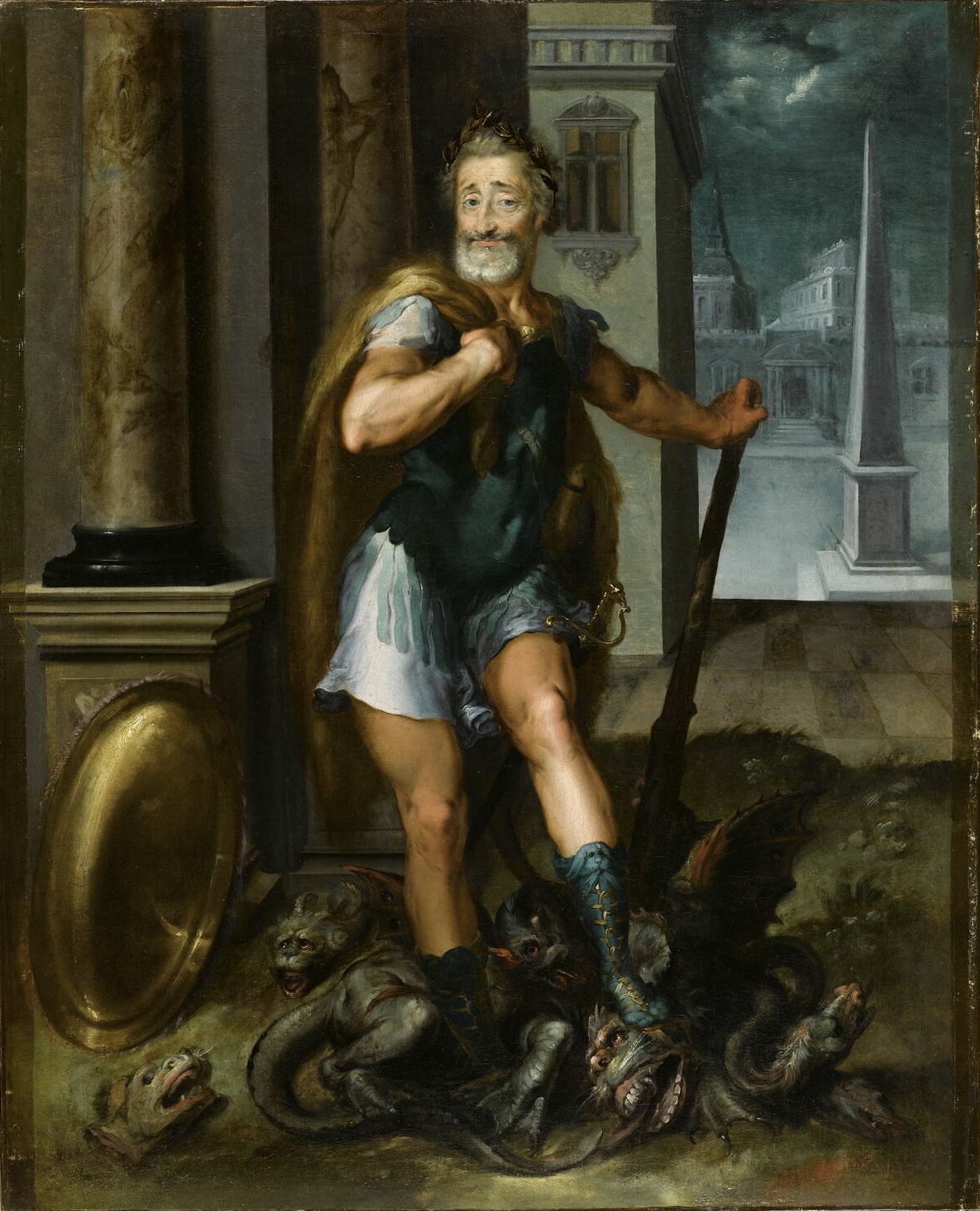February’s
Roman Calendar Feature
The 2019–2020 Roman Calendar features
twelve mythical monsters from the 2019 edition of Martia Dementia,
Bolchazy-Carducci’s annual spring bracket tournament. Visit us on social media
(Facebook, Twitter, and our blog) for announcements regarding the 2020 Martia
Dementia—starting later this month!
Behold, the Lernaean Hydra! According to
Hesiod, this many-headed serpentine creature was the offspring of Typhon and
Echidna, prolific parents of some of Greek mythology’s most famous monsters. An
inhabitant of the liminal lake Lerna, the Hydra breathed out poisonous vapors
that made the environs nearly impossible for mortals to even approach.
Heracles, during his twelve labors, was tasked with slaying the Hydra—no easy
feat, especially because as Heracles severed one Hydra head, two more grew in
its place. Unable to defeat the Hydra on his own, Heracles asked his nephew
Iolaus for help. While Heracles sliced away each head, Iolaus used a firebrand
to cauterize the wounds, preventing the Hydra from regenerating.
 |
Hydra, sixth-century bce
Caeretan hydria (water vessel)
(Digital image courtesy of the Getty’s Open
Content Program)
|
A victorious Heracles dipped his arrows in
the Hydra’s poisonous blood, creating a potent weapon that helped him
accomplish several of his other labors—but would ultimately be his own
downfall. The body of the Hydra was placed in the sky as the constellation
Hydra, which has a shape resembling a twisting snake. This constellation is the
largest of the eighty-eight modern constellations.
 |
The Hydra depicted among eleven other
constellations,
nineteenth-century star chart card from a set known as Urania’s Mirror
(Public Domain, restored
by Adam Cuerden)
|
Today, the term “hydra” is often used to
refer to an intractable problem that is not easily solved; as when Heracles
attempted to slay the mythical Hydra, an attempt to find a solution results in
new problems cropping up. King Henry IV of France chose to portray himself as Hercules
(the Roman name for Heracles) standing over a vanquished Hydra after he brought
an end to France’s internecine religious wars at the end of the sixteenth
century. In the painting, Henry—sporting a rather self-satisfied facial
expression—casually stands over the beheaded monster, representing his recent
political enemy, the Catholic League.
 |
| Portrait of Henry IV as Hercules Slaying the Lernaean Hydra by Toussaint Dubreuil (1561–1600) (Public Domain) |
Another more modern application of the
ancient Hydra occurs in the field of biology: Hydra refers to the genus of fresh-water organisms (related to
jellyfish) that have a tubular body featuring a mouth at one end surrounded by
an array of tentacles. Like its mythological namesake, a Hydra can regenerate damaged tissue: when cut in half, each
half can grow into a whole, complete Hydra.
Similarly, like the Lernaean Hydra, these creatures may be quasi-immortal. The
same biological factors that allow Hydra to
regenerate tissue mean that they do not senesce, or grow old.
Hydra attached to
a substrate (© Creative Commons
Attribution-Share Alike 3.0 Unported/Stephen
Friedt)
|
The Hydra, with its symbolic and scientific iterations,
illustrates how Greek and Roman myth continues to live on in new, often
unexpected ways. Students may enjoy discussing other mythological figures that
have taken on new meanings in the modern world.
Still
curious about how the ancients described the Hydra? In Ovid’s Metamorphoses
(9.67–72) Hercules competes with the
river god Achelous for Deianira’s hand in marriage. Taunting the god, he boasts
about his victory over the Hydra, a feat that he claims was much more difficult
than the one he is about to perform. Here, Hercules claims that the Hydra he
vanquished had one-hundred heads!
“cunarum
labor est angues superare mearum,”
dixit
“et ut vincas alios, Acheloe, dracones,
pars
quota Lernaeae serpens eris unus echidnae?
Vulneribus
fecunda suis erat illa, nec ullum
de
centum numero caput est inpune recisum,
quin
gemino cervix herede valentior esset.
Hanc ego ramosam natis e caede colubris
Hanc ego ramosam natis e caede colubris
crescentemque
malo domui domitamque reclusi.”
“It was
the pastime of my cradle days
to
strangle better snakes than you—and though
your
great length may excel all of your kind,
how
small a part of that Lernaean snake
would
you—one serpent be? It grew from wounds
I gave
(at first it had one-hundred heads)
and
every time I severed one head from
its
neck two grew there in the place of one,
by
which its strength increased. This creature then
outbranching
with strong serpents, sprung from death
and
thriving on destruction, I destroyed.”
Translation
in Ovid’s
Metamorphoses
by Brookes Moore
–Amelia Wallace, Editor

No comments:
Post a Comment